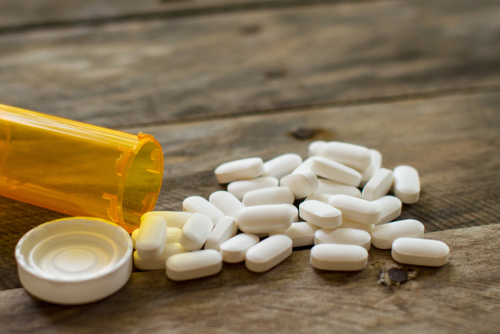$572M verdict against Johnson & Johnson in opioid suit is based on Oklahoma's unusual public nuisance law

Image from Shutterstock.com.
An Oklahoma judge ruled Monday that Johnson & Johnson is liable for $572 million for the public nuisance it created when it engaged in a marketing campaign that promoted opioid use.
The decision by Judge Thad Balkman of Cleveland County was the first to hold a drugmaker responsible for the opioid epidemic after a trial, report the New York Times, Law.com, Courthouse News Service, the Oklahoman and the Washington Post.
Balkman, who ruled after a bench trial, limited damages to the amount needed to fight the crisis for one year. Oklahoma had sought $17 billion. The Oklahoman reports “confusion” over whether the state can seek additional funding if the drug crisis persists.
In his ruling, Balkman said Johnson & Johnson had joined in a marketing campaign to spread the message that pain was being undertreated and prescription opioids carried a low risk of abuse.
Johnson & Johnson was sued because its subsidiaries made a fentanyl patch and sold pharmaceutical ingredients for opioids to other manufacturers. Two other defendants in the case settled before trial. Purdue Pharma agreed to pay $270 million and Teva agreed to pay $85 million.
Balkman based his decision on Oklahoma’s unusual public nuisance law, which does not require interference with property. The law is expected to be a key issue in Johnson & Johnson’s appeal, the Oklahoman reports.
Oklahoma’s public nuisance law partly defines a nuisance as “unlawfully doing an act, or omitting to perform a duty” that injures or endangers the comfort, health or safety of others. A public nuisance is defined as an act or omission that affects an entire community or neighborhood.
Johnson & Johnson had argued that there cannot be a nuisance because property wasn’t affected. That appears to be the case in other states, Balkman said, but not in Oklahoma.
“There is nothing in this text that suggests an actionable nuisance requires the use of or a connection to real or personal property,” Balkman wrote.
Even if the Oklahoma law did require the use of property, there is evidence that Johnson & Johnson used public roads, buildings and land in Oklahoma to create the nuisance, Balkman said.
Sales representatives were trained in Oklahoma homes on how to disseminate misleading materials, the judge said. Speakers delivered messages to doctors in Oklahoma offices. Marketing messages were electronically disseminated into Oklahoma homes.
Johnson & Johnson lawyer Sabrina Strong told reporters that Balkman’s decision is “a radical departure” from case law. “For over 100 years, public nuisance law has been limited to property disputes, where one misuses their property and causes harm to another. That is not what this case is about,” Strong said.
Strong contends Balkman’s interpretation of nuisance law deprived Johnson & Johnson of due process. Her client will appeal to the Oklahoma Supreme Court and will go to the U.S. Supreme Court if necessary, she said.
Johnson & Johnson said in the statement that the Oklahoma verdict will have little impact in pending multistate litigation in federal court in Cleveland, Ohio, against 22 defendants. Public nuisance is just one of several claims in that litigation.
But lawyers for the 2,000 cities, counties and other jurisdictions with pending federal cases were buoyed by the decision. “While public nuisance laws differ in every state, this decision is a critical step forward,” they said in a statement.
American Tort Reform Association President Tiger Joyce called the decision a “major expansion” of public nuisance law. “We fear that other industries, including Oklahoma’s oil and gas producers, may now be vulnerable to public nuisance law’s applicability to them with regard to issues like climate change as the state looks for additional funding sources to manage public crises,” Joyce said in a statement.



